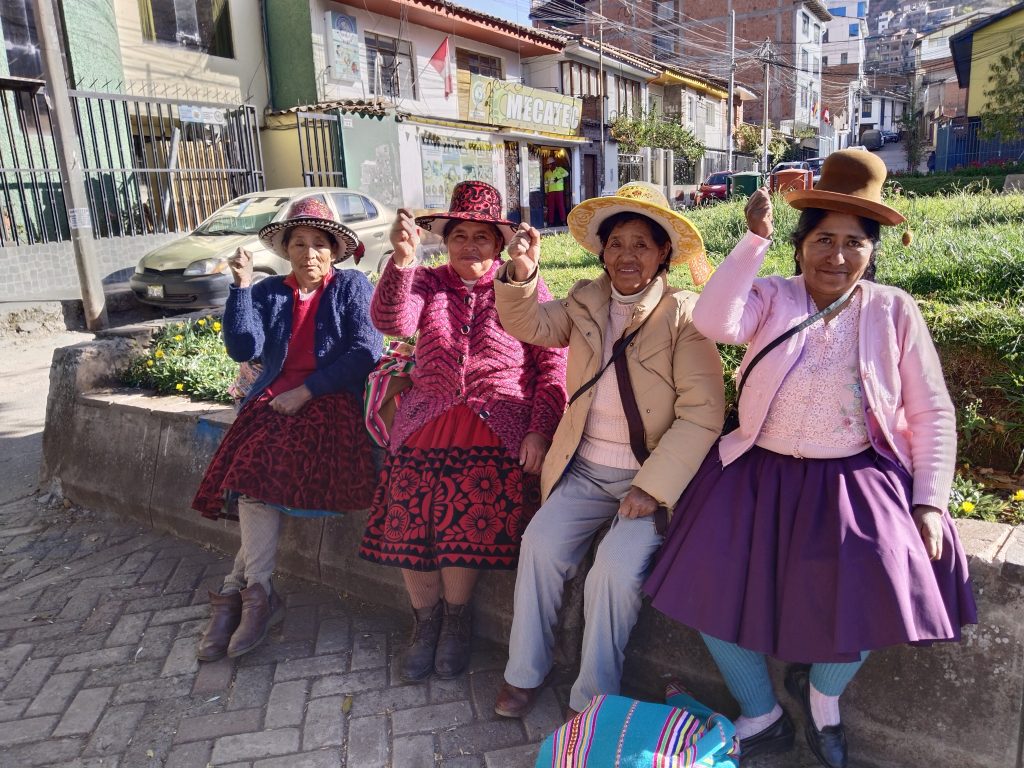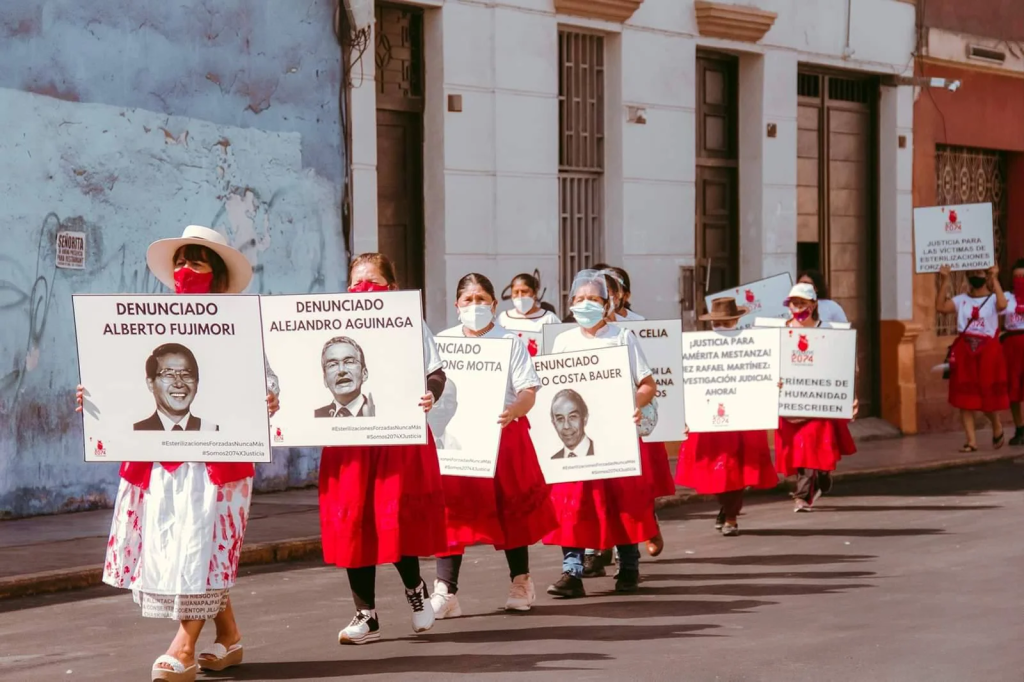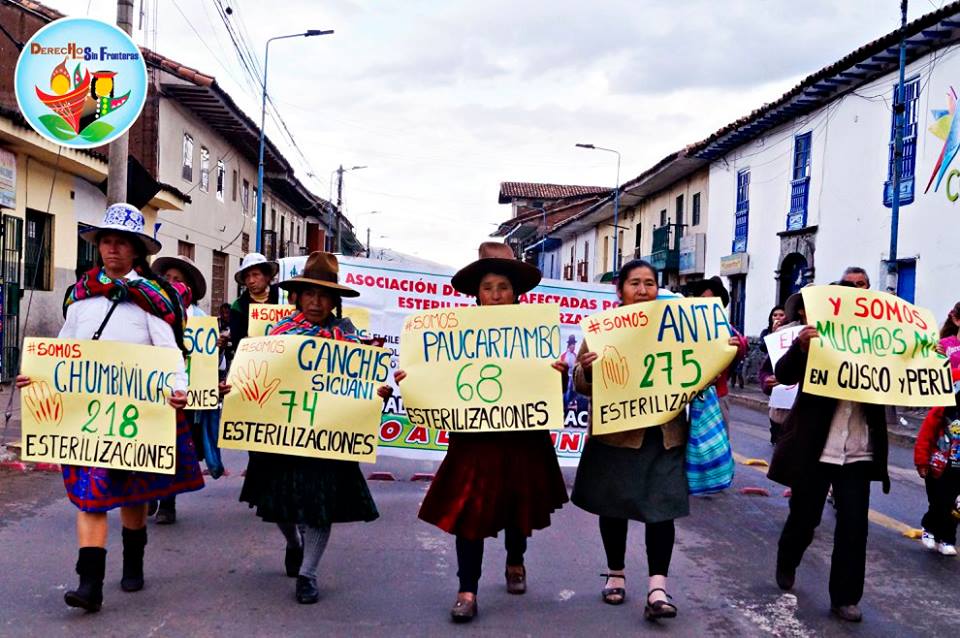Alberto Fujimori's dictatorship forcibly sterilized at least 6,974 women, especially rural Indigenous and Quechua-speaking people. To carry it out, the government simulated a supposed public policy that would empower sexual and reproductive rights. Although this crime was used in several electoral campaigns, none of the democratically elected presidents have advanced the development of a policy for reparations for the victims. While the Judiciary denies them access to justice, reality shows us that we have a democracy that was never built among equals.
It is concerning because Fujimori has been pardoned. Yet, there is nothing for us. They also want to annul the appeal for legal protection. So far there is no justice for us. We have been seeking justice for so many years and we must travel to Lima and demand all the rights we have lost.
Inés Condori, leader of the Association of Victims of Chumbivilcas.
Peru’s political situation is serious and was not created overnight. Not only are there media scandals, but there are also corruption allegations, detentions of high-ranking officials in the justice system, and presidential dismissals (eight presidents since 2016). Likewise, a Congress of 130 members is being consolidated that has subjugated the presidential system and is undermining the various institutions responsible for sustaining the system of checks and balances upon which democracy is based.
However, we did not arrive at this critical phase of our democracy overnight: it was a puzzle pieced together by multiple actors since the end of the dictatorship in 2000. Similarly, democratic institutions and the system of checks and balances have been undermined and the pain of the victims has also been instrumentalized in electoral games every five years. They use their pain to win votes, but once they came to power, they forgot about it.

Forced Sterilization of Women
Between 1992 and 2000, Peru suffered Fujimori’s dictatorship and the violation of human rights. The regime committed crimes that sadly have set precedents worldwide like the sentences brought by the Inter-American Court of Human Rights on the La Cantuta and Barrios Altos cases, as well as the internal processes that sentenced Alberto Fujimori for human rights violations and corruption cases.
However, impunity persists for other crimes, and their victims continue to suffer the scorn of the State. One of these crimes is the forced sterilization of thousands of women. Since the dictatorship began in 1992, Fujimori built a legal framework based on the supposed empowerment of women. Then, beginning in 1996, he managed to implement the National Program of Family Planning and Reproductive Health. Unfortunately, in its implementation, this policy did not empower women.
The feeble attempts by the State to enable women victims of forced sterilizations to access their rights to truth, justice, and reparation have dwindled to extinction.
The feeble attempts by the State to enable victims to access their rights to truth, justice, and reparation have dwindled to extinction.
From a discursive perspective, this policy was supposed to allow women to have the right to decide how many children to have and to opt for a permanent sterilization method. However, in practice, the sexual and reproductive rights of thousands of women were violated by compulsorily and forcibly subjecting them to a permanent sterilization method. In this way, it became a policy that violated the rights of women of lesser means and, above all, indigenous women from rural areas.
During the implementation of this policy, investigations by the Ombudsman’s Office and lawyer Giulia Tamayo brought to light these actions against thousands of women and managed to slow down this compulsive application. Later, in 2002, there were two more investigations. The first, by the Ministry of Health, recommended a series of reparations for the victims (an investigation forgotten by the Executive Branch). The second, inspired by a fundamentalist and anti-rights agenda, attempted to reverse women’s right to access family planning methods.
Finally, the feeble attempts by the State to enable women victims of forced sterilizations to access their rights to truth, justice, and reparation have dwindled to extinction.

Used for politics in electoral periods
Despite evidence of deaths and serious complications caused by surgical interventions, and the systematic and widespread violation of sexual and reproductive rights, this crime is still not recognized, and the affected women continue to be revictimized. The most questionable aspect is that forced sterilizations have been used every five years by presidential aspirants to attack the dictator’s eternal candidate: Keiko Fujimori, Alberto Fujimori’s daughter.
In 2011, the dispute was between Ollanta Humala and Keiko Fujimori. At that time, the victims organized themselves, received support from Indigenous congresswoman Hilaria Supa (from Humala’s Nationalist Party), marched to Lima, and protested Fujimori’s daughter. Humala did not miss the opportunity and used the case to his advantage.
After winning the elections, Humala never had the political will to advance in the recognition of the rights of victims of forced sterilizations. Just a few months before finishing his term, he created the Forced Sterilization Victims Registry (Reviesfo), whose goal was to provide legal and health care and provide psychosocial support to women. However, he did not recognize the right to reparations for these victims.
From 2021 to date, there have been no more victims registered in the Reviesfo, there is no budget for the care of registered victims, and legal sponsorship is insufficient and deficient.
From 2021 to date, there have been no more victims registered in Reviesfo and there is no budget for the care of registered victims.
In 2016, Keiko Fujimori ran against Pedro Pablo Kuczynski (PPK) and the sterilizations were again used to attack the dictator’s daughter. PPK’s vice-presidential candidate even signed an act of commitment to the victims. However, no progress was made after the elections. Then came the political chaos and the pandemic: Kuczynski fell; his vice-president, Martin Vizcarra, governed for two and a half years; he was replaced by Manuel Merino, who lasted a week; and then the congressman Francisco Sagasti entered. None of these people remembered the victims and there was a setback in the care of the victims registered in the Reviesfo.
Finally, in 2021, Keiko Fujimori vied for the presidency against Pedro Castillo and the crime of forced sterilizations became visible again. Once Castillo won the election, he did nothing to recognize the rights of the victims. Since 2021 to date, there has been no more victims registered in the Reviesfo, there is no budget in the Ministry of Women for the care of registered women and, the legal sponsorship provided by the Ministry of Justice is insufficient and deficient.

No right to reparations
Currently, the 6974 female victims registered in the Reviesfo are unable to access their rights to justice and reparations. In addition, there are departments in which the Ministry of Justice has not made the slightest effort to register victims. In Puno only two women are registered and in Tacna not a single victim is listed. Likewise, the State is not interested in knowing the ethnic identification of the victims (the registry card does not include this information), even though there are thousands of Quechua-speaking victims or victims who speak a language other than Spanish.
In terms of access to justice, there are several public prosecutors’ investigations involving thousands of victims, but only one had passed to the judicial phase. However, one of Alberto Fujimori’s former health ministers, Alejandro Aguinaga, current congressman of the Republic and accused in this case, managed to reverse all the progress in the judicial process through an injunction and the file has returned to square one. This situation occurred due to the inaction of the Ministry of Justice, which should provide legal representation to the victims.
The main actors in this electoral game used crime to oppose the Fujimori candidate, but then, when they came to power, they slammed the door in women’s faces, and then they discarded them.
The actors of this electoral game used crime to fight Fujimori’s candidate, but then they slammed the door in women’s faces.
Regarding the right to reparations, the victims’ association in Chumbivilcas, together with several civil society organizations, sued the Peruvian State. The process was won in two instances and the Judicial Power ordered the Executive Power to design and implement, together with the victims, a public policy of reparations for all the women registered in the Reviesfo. Despite this, the Ministry of Justice is once again immobile: nothing has been done or said.
We have a Judicial Power that denies access to justice to the victims; a Public Ministry that delays investigations for an eternity and never accuses those responsible; a Ministry of Justice that does not defend the victims and a Ministry of Women that allocates zero budget to the psychosocial accompaniment of those affected. At the same time, in the electoral game, the candidates have used the victims in the worst way. They used crime to oppose the candidacy of Fujimori, but then, when they came to power, they slammed the door in women’s faces, they discarded them.
Twenty-four years after the end of the dictatorship, reality shows us that we have a democracy that was never built among equals and that the State institutions in charge of protecting citizens have never worked for certain people.

Ana María Vidal Carrasco is a litigator in human rights and constitutional law. She litigated the appeal for legal protection filed by the victims of forced sterilization that has forced the Peruvian State to implement a reparations policy.
